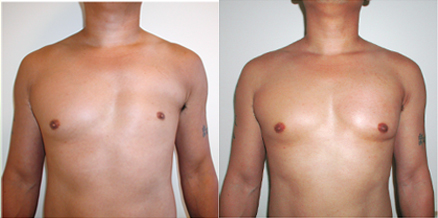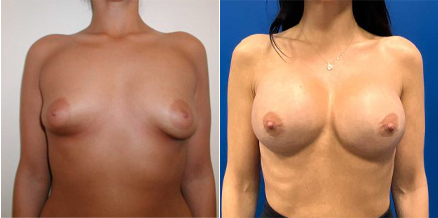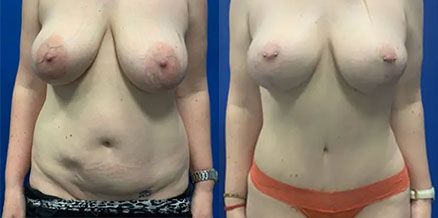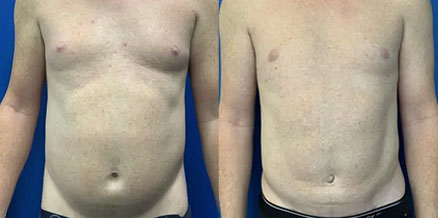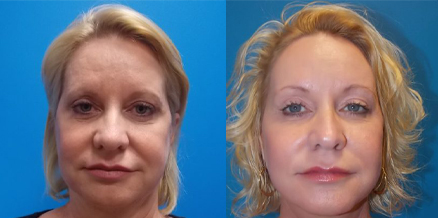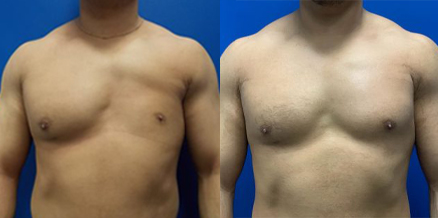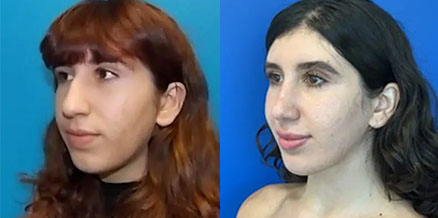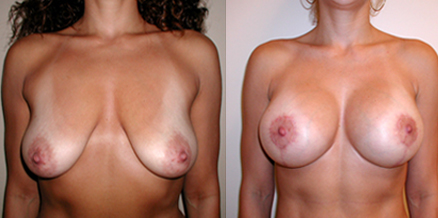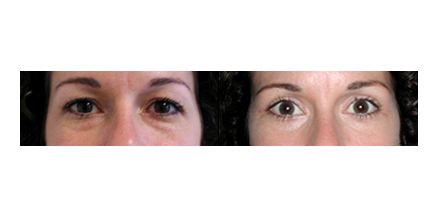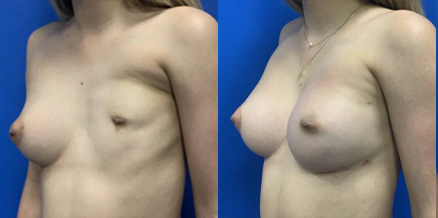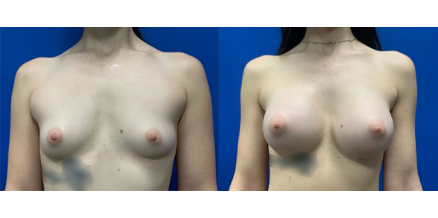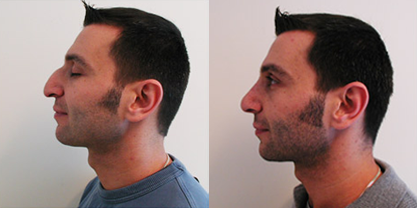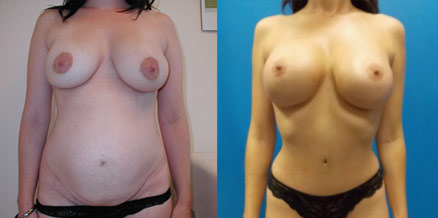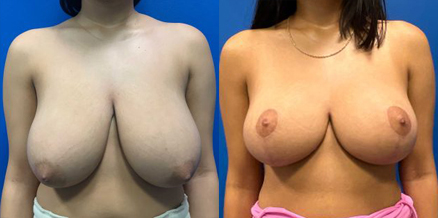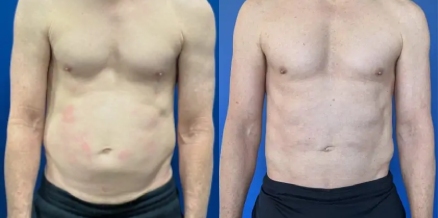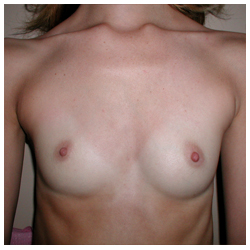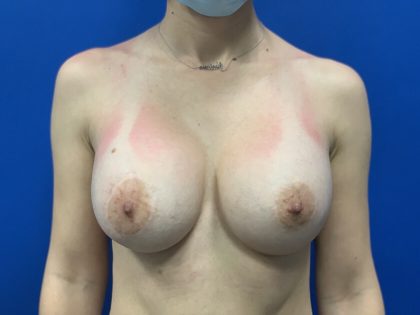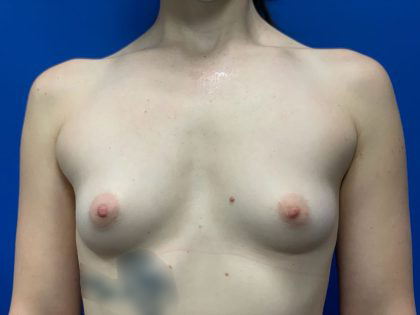Breast Augmentation
Conveniently located to serve the areas of Beverly Hills, West Hollywood, Los Angeles and Pasadena, CA

Women’s breasts have been the quintessential mark of femininity, throughout the history of mankind, across cultures and continents. This is evidenced in prehistoric etchings and drawings, to mind-blowing Renaissance marble sculptures and paintings, to fashion accessories that enhance the appearance or illusion of having fuller breasts; as popularized by Elizabethan era bustiers, to the modern day push-up bras. And conversely the lack thereof, or the desire to have a flat chest alludes to the androgynous or non-binary sexual identity.
Contents
- 1 Before and After Photos
- 2 About Breast Augmentation
- 3 Breast Implant Considerations
- 4 Benefits of Breast Augmentation
- 5 Candidates for Breast Augmentation
- 6 Personal Consultation with Dr. Salibian
- 7 Preparation
- 8 Breast Augmentation Procedure
- 9 Recovery
- 10 Results
- 11 Complementary & Corresponding Procedures
- 12 Cost of a Breast Augmentation
- 13 FAQ
- 13.1 Can breast augmentation improve breast symmetry?
- 13.2 What is downtime like after a breast augmentation?
- 13.3 How do I decide what size breast implants to get?
- 13.4 How do I choose between saline and silicone implants?
- 13.5 Can I get breast augmentation after mastectomy?
- 13.6 Can Breast Implants Interfere with Breast Cancer Treatment?
- 13.7 What is BII?
- 13.8 Are breast implants supposed to be changed every 10 years ?
- 13.9 Is it an emergency to remove ruptured breast implants?
- 13.10 If my armpit has evidence of leaked silicone from an old breast implant, do I need to have these nodes removed? Is it dangerous to have silicone in my lymph nodes?
- 13.11 Will I have drains after breast augmentation?
- 13.12 How long do drains stay?
- 14 References
Before and After Photos
As scientific methods and surgical science has evolved, so has the history of the best methods to surgically enhance the female breast. Breast Augmentation using breast implants, albeit with its waxing and waning notoriety in popular media, remains one of the most common Cosmetic Surgical procedures to enhance the shape and size of the breasts. Currently used breast implants allow women larger breasts with a natural look and feel that complements their body proportions with a very high long-term satisfaction rate.
Look and feel your best in the body you have with a breast augmentation by renowned Beverly Hills Board Certified Plastic Surgeon Dr. Mossi Salibian. To reach Dr. Salibian’s practice call (310) 550-0750, or fill out an inquiry form to visit his private office on Sunset Boulevard for a thorough consultation.
About Breast Augmentation
The most current types of implants that are used for breast augmentation are the silicone gel implants. They are manufactured in several different geometrically three-dimensional shapes as in varying width, height, and projection. They come in varying degrees of firmness, or popularly coined as silicone gel “cohesiveness,” which ranges from softer and more natural feeling silicone gel, to more firmer or “gummy bear.” This type of implant was popularized as showing less rippling, especially if a patient does not have adequate breast and fatty tissue to mask the implant. Saline-filled implants have remained on the market ever since their initial popularity when the first and second generation of silicone implants (non-gel) were discontinued in the early 1990s. Fat transfer without the use of implants is yet another method to enlarge the breast size and contour safely when a conservative enhancement is desired.
The Popularity of Breast Augmentation
Breast augmentation is one of the most commonly performed procedures at Dr. Salibian’s practice with a wide variety of patients ranging in age, body proportions, ethnicity, cultural and social backgrounds. In fact, every year, around 300,000 patients in the US undergo breast augmentation. (1) There is a good reason for these remarkable figures. In a study including 494 breast augmentation patients, 100% of participants reported an increase in their sexual and psychosocial well being. (2)
It is said that breasts are “sisters and not twins” that is women’s breasts are not always exactly equal in shape, size and appearance between the right and left breast. Sometimes the difference can be more than a cup size or greater with a different shape altogether. Breast implants are done not only to enhance the size and proportions but also to correct for breast asymmetry and other cosmetic irregularities.
Tuberous Breast Deformity
Tuberous breast deformity is a condition that affects the shape and appearance of the breasts. It is characterized by underdeveloped or constricted breast tissue. This results in a tubular or elongated shape with a narrow base. The condition can cause significant distress and self-consciousness for those affected, as it can lead to asymmetry, lack of volume, and abnormal nipple position. Breast augmentation is a common approach used to correct tuberous breast deformity. By utilizing breast implants, Dr. Salibian can enhance volume and improve symmetry, creating a more balanced and proportionate appearance.
Congenital Breast Deformity
Congenital breast deformity is a condition in which the breasts do not develop normally, and is not necessarily a genetic disorder. This can result in various abnormalities such as Poland syndrome, tuberous breasts, amastia (absence of breast tissue), athelia (altogether absence of nipple), inverted nipples, and hypoplastic breasts (underdeveloped breasts). At Mossi Salibian MD, our goal is to provide comprehensive and personalized care for individuals with congenital breast deformities. With his expertise in plastic surgery techniques, Dr. Salibian can help restore balance, symmetry, and confidence, allowing patients to embrace their unique self and beauty.
Post-Mastectomy Breast Reconstruction
Breast reconstruction offers hope for those who have undergone a mastectomy. It is a surgical procedure aimed at recreating the appearance of the breast, allowing women to regain their sense of wholeness and femininity. There are various techniques available, including reconstruction with implants and autologous breast reconstruction. Dr. Salibian will work closely with each patient to customize a treatment plan that suits their unique needs and desires.
Breast Implant Considerations
Implant Type
Silicone gel is the preferred type of breast implant for most patients and surgeons. Silicone gel mimics the feel of breast tissue, allowing for a more natural sensation and look once healed. Breast Implants filled with sterile saline were once standard in the 1990s and 2000s, before the FDA approved several new generations of silicone gel implants in 2006 onward.
Although there are special or individual considerations and exceptions; in general you must be 22 years of age or older to receive silicone gel breast implants. Whereas breast augmentation with saline implants has a minimum age of 18.
Implant Size
This will be determined during your consultation and physical examination and will inspire a conversation about your implant shape and size that would best match your chest and enhance your body proportions.
Implant Shape & Texture
Implants come in two main shapes: round and anatomic. Round implants are by far the most commonly used, though textured anatomic implants make up a small portion of cases. Anatomically-shaped implants are textured according to the specifications of the manufacturer. However, there have been instances of a rare condition known as BIA-ALCL (Breast Implant Associated – Anaplastic Large Cell Lymphoma), which is a type of a lymphoma that is detected within the breast capsule and is not breast cancer. This disease has been associated with one type of textured breast implant manufactured by Allergan.
Allergan Biocell Device Withdrawal
Allergan, a leading manufacturer of breast implants, has voluntarily withdrawn their Biocell textured implants from the market. This decision was made in response to safety concerns raised by the FDA regarding the potential risk of developing BIA-ALCL. This announcement does not imply that all textured implants are dangerous, or that all patients with textured implants will develop complications. The voluntary withdrawal simply reflects an abundance of caution from Allergan and the FDA to further investigate and ensure patient safety. Do You Use Textured Implants?
Although BIA-ALCL is a very rare occurrence with a high cure rate, Dr. Salibian has stopped using textured implants in his practice.
Benefits of Breast Augmentation
- Customizable with a wide variety of breast implant choices
- Fuller breast contour to match a patient’s body proportions
- Better cleavage and “side boob”
- Can correct and improve natural breast asymmetry
- Relatively quick recovery with minimal downtime
- Creation of a more youthful breast contour in a patient after weight loss and for an older patient with loose and excess skin when combined with a breast lift
- Improved self confidence and sex appeal
- More clothing options and styles to look great in, from bikini tops to evening wear.
- Breastfeeding is not contraindicated and is almost always successful
Whether you have always thought your breasts were too small, or you have been uncomfortable with their shape and asymmetry, breast augmentation can help you feel more feminine, sexy and self confident.
Candidates for Breast Augmentation
You are a good candidate for a breast augmentation if you:
- Are self-conscious about your current breast size.
- Have experienced breast changes from aging, weight change, or pregnancy.
- Have breast size, shape, appearance and volume asymmetry.
- Are mentally ready for the surgery and the healing process.
- Are medically and psychologically ready for elective cosmetic breast surgery.
- Have realistic expectations of what the surgery can achieve.
The best candidate for a breast augmentation is someone who is in good health with no serious overarching health conditions.
Personal Consultation with Dr. Salibian
You have many options to choose from should you elect to undergo breast augmentation. During your initial consultation, Dr. Salibian pays special attention to your desired breast size with respect to your body shape and proportions. He will discuss in detail the choice of implant size, kind, style, shape, and projection, the location of the incisions, whether placement of the breast implants above or partially underneath the pectoral muscle, the role of mammography, breast ultrasound, breast and implant MRI, the short and long term care for the breasts and breast implants, as well as the long-term maintenance and expectations.
Preparation
To fully prepare for your breast augmentation procedure:
- Smoking affects circulation and healing among its many other detrimental effects. Smokers are strongly encouraged to quit and be free of all nicotine in their system for a minimum of three months prior to surgery.
- Stop taking megadoses of Vitamin C – daily supplements of vitamins are ok.
- You will make an appointment with your Primary Care Doctor for medical clearance to make sure you are in good overall health prior to elective cosmetic breast surgery.
- Have your prescriptions filled out and securely stored before your surgery date.
- Make arrangements for a family member or a friend to take you home after surgery and stay with you for the first 24 hours.
Breast Augmentation Procedure
Incision Site
Dr. Salibian will use one of three possible incision sites during your breast augmentation surgery. He will discuss this with you at your personal consultation. The most common location is the inframammary incision, placed in the breast crease directly underneath the breast tissue. The second is the periareolar incision, made around the nipple, almost always along the lower half of the areola and breast skin border. The third and less common is the transaxillary incision, placed at one of your natural creases at your armpit.
Dr. Salibian will choose the most suitable incision location for you given your preference and the adjunctive procedures that need to be performed, such as a breast lift, at the same time as the breast augmentation. This is to best minimize and hide incisions and scaring, as well as for the best overall result.
Positioning of the Implants
When it comes to breast implant position, Dr. Salibian understands the importance of achieving an enhanced aesthetic appearance that is both natural-looking and harmonious with your body proportions.
Subglandular or Prepectoral Placement
In this position, the breast implants are placed between the breast tissue and the chest muscle. This technique is often chosen for patients who have sufficient breast tissue and want to achieve more projection and cleavage. Subglandular placement generally involves a shorter recovery period and less discomfort and swelling compared to subpectoral or the dual plane placement.
Subpectoral or Dual Plane Placement
The implants are positioned partially beneath the chest muscle, the pectoral muscle, otherwise known as dual plane positioning. This technique provides additional coverage to the upper half or third of the implants, resulting in a more natural appearance. The transition or take off from the upper chest and clavicle down to the breast is better camouflaged if the implant is placed partially under the pectoral muscle, especially if the patient is thin with minimal subcutaneous fat layer, or if a patient is thin, small breasted, and desires to be larger than a full C cup. For these patients, if the implant is placed pre-pectoral or subglandular (under the breast tissue alone), it will result in the “fake” breast implant look. The upper chest will appear flat and thin with a stark transition to two round “balls” for breasts – an obvious breast “done” look that may be too conspicuous.
A disadvantage of the subpectoral positioning may be the implant animation deformity where the implants move or “jump” when the pectoral muscle contracts and brings the arms or at times it may push the implant to the side and down. You will have the opportunity to discuss these as well as other advantages and disadvantages of dual plane subpectoral or subglandular during your consultation with Dr. Salibian..
Total Submuscular or Subpectoral Placement
Total submuscular positioning is generally used in the reconstructive breast surgery arena when Staged Breast Reconstruction is performed where in Stage I, the tissue expander is placed under full muscle coverage; underneath the pectoral and serratus anterior muscles to cover the top half and front as well as the lower and sides respectively of the final reconstructed breast. During Stage II of the implant based breast reconstruction, the expander is removed and the submuscular pocket is further adjusted to accommodate the final breast implant. However, with the popularity and efficacy of using ADM (Acellular Dermal Matrix), a specially prepared and sterilized, acellular skin matrix (without living cells) but only its three dimensional collagen network of protein structure; the full muscular coverage has become unnecessary. This is because the ADM acts to support the lower half and sides as in an internal “hammock” supporting the final implant in the desired position.
How Long Does Breast Augmentation Surgery Take?
The surgery will take about 2 hours to complete. Breast augmentation is an outpatient procedure, you will be able to go home several hours after your surgery. Be sure to have a friend or relative available to drive you.
Recovery
In the first few days of your recovery, take only the prescribed medication that Dr. Salibian orders for you for pain management. You will have post op instructions to follow and Dr. Salibian’s staff will go over the prescribed medications, timing and home care and activities in detail with you. After the first week you may be able to manage with over the counter medications.
Dr. Salibian’s staff will go over medications that are over the counter that you can take and those that you should avoid for two weeks prior and after surgery. To make sure you are comfortable, you will need supportive garments, as in a recovery bra, that will be provided for you When you are ready to shower, which is not before your first postoperative visit with Dr. Salibian, you will want to keep your incisions covered with Steri-strips which will dry with your skin, encourage proper healing, and minimize the risk of infection and scarring.
It usually takes about two weeks for a patient to be back to full capacity, and 6 to 8 weeks before they can bring more vigorous activity back into their routine.
Results
Dr. Salibian’s expertise in breast augmentation can help you get the results you have always dreamed of. He will make sure to keep your expectations in mind during consultation and surgery to ensure your satisfaction. And equally as important, he will make sure to follow-up long term to examine, evaluate and see your results with your breast augmentation journey in the years to come.
Complementary & Corresponding Procedures
Augmentation with Lift
If you are considering a breast augmentation, but have moderate to severe ptosis due to pregnancy or weight loss, you are also a good candidate for a combination augmentation and a breast lift. This combined procedure works well to create an overall youthful and comprehensively improved breast shape and silhouette.
Fat Transfer
Fat-transfer can increase the size of one’s breasts conservatively. There are risks and benefits associated with fat transfer to healthy breasts that Dr. Salibian will discuss with you in detail as to assure full understanding of the process. The procedure involves liposuction to extract fat from other areas of your body and re-inject it into the breast. This is a less common alternative to silicone and saline implants but it does have its indications in the right patient.
Reconstructive Breast Augmentation
Generally considered a cosmetic procedure, breast augmentation is also used in reconstructive breast surgery:
- To reconstruct the breast removed due to mastectomy
- To improve the symmetry in congenitally asymmetrical breasts
- To reconstruct the breasts in patients with congenitally absent or anomalous breast development
- To increase the size of the opposite breast to match a reconstructed breast
Revisional Breast Surgeries
Dr. Salibian’s practice attracts patients for revisional breast surgeries. These patients, who are unsatisfied with their previous breast surgery, or have had complications are referred for revisional breast procedures.
Breast revision surgery is not often talked about. As best stated by one of his own patients, there is an element of guilt involved with the decision or “reasons” for the initial augmentation. Since a bad augmentation can easily be hidden under clothing, it is often outwardly ignored, but it can devastate women and their self-esteem.
It is important to know that revisional surgeries can oftentimes correct and restore shape, contour, and proportion to an initially unsatisfactory procedure, giving hope to patients regarding their breast implant related problems. It is important that women feel empowered to request revisional surgery when the outcome of their initial surgery is not to their satisfaction.
Tummy Tuck, Mommy Makeover
Dr. Salibian also offers tummy tucks and mommy makeovers for his patients for more comprehensive body contouring results. There are many options for you to have the body you desire.
Cost of a Breast Augmentation
The cost of a breast augmentation depends on its nature – whether it is a straight forward augmentation, a concomitant symmetrizing procedure, or if it is a complicated breast augmentation revision surgery. Therefore the cost will depend on your circumstances and presentation. The raw cost for a pair of saline implants defer from silicone implants; moreover, the type of silicone gel implant and its degree of cohesivity also increases the cost for the implants. The specifics of the procedure can vary considerably among patients. It is important to note that there will not be surprise billing or hidden costs once you have received the final quote for the operation to get the breasts you desire.
To book a consultation at Dr. Salibian’s Los Angeles practice, call (310) 550-0750 or complete a simple inquiry form to get in touch with us.
FAQ
Can breast augmentation improve breast symmetry?
Yes, it can! Breast augmentation can improve symmetry in the absence of expected breast development, as well as improve and match breast size after a previous reconstruction.
What is downtime like after a breast augmentation?
Typically about a week to ten days. After two weeks, patients will have some residual swelling and minimal discomfort. If your job requires physical activity including lifting, and repetitive pulling, pushing and carrying things, you may need to take at least three weeks off or try to keep the activity level down. Around the two-month mark, you should be close to a full recovery. It usually takes up to four months for the body to feel that the implants are completely settled and you may no longer notice or feel that you have breast implants under your breasts and most patients say it feels like a natural part of their body.
How do I decide what size breast implants to get?
During your consultation, Dr. Salibian will carefully assess your existing breast size, body proportions, and aesthetic goals to recommend an implant size that will achieve the desired outcome.The process will include taking meticulous measurements in the office and implant sizing with special fitted elastic bras.
How do I choose between saline and silicone implants?
Saline implants tend to feel firmer than natural breast tissue, their longevity is about 10 years, with a cumulative one percent per year leak rate thereafter. Should they malfunction or leak, the content is sterile saline (same as in injectable saline in intravenous fluid bags) and your body will eliminate it without complications. The implant shell then will need to be surgically removed or replaced with another implant per your desire. Most patients who have had saline implants and have experienced a leak or other implant based complications, undergo replacement with silicone gel implants. Silicone gel implants, on the other hand, are filled with a cohesive silicone gel of varying densities that closely mimic the look and feel of natural breasts. Both types of implants can be made to appear natural when tastefully done.Ultimately, the decision is yours whether to have saline or silicone gel implants.
Can I get breast augmentation after mastectomy?
Breast augmentation can be an option for breast cancer reconstruction, especially in implant-based reconstruction for the breast that has been removed; or to symmetrize or augment a smaller breast to match the side that has been reconstructed with implants or via autologous methods. Breast implants are not associated with breast cancer, and they do not increase the risk of getting breast cancer.
Can Breast Implants Interfere with Breast Cancer Treatment?
If you have had breast implants and have been diagnosed with breast cancer, depending on where the cancer is located, the breast implant may or may not need to be removed. In situations such as this, Dr. Salibian works closely with the breast surgeon to make sure the appropriate steps are taken, and should the safest course be the removal of that implant, then it will be addressed at the time of the cancer operation or before as deemed necessary. If the breast implant interferes with ongoing breast treatment as with radiation treatments or if a complication should occur after or during the treatment, the implant can easily be removed, and the breasts addressed after completion of the cancer treatment.
What is BII?
Breast Implant Illness (BII), is a poorly understood conglomerate of symptoms that some women complain years after breast implant surgery. It is not clear how many patients with breast implants develop BII (3) but some of the reported signs and symptoms are chronic fatigue, non specific muscle and joint pains, memory and concentration problems, breathing problems, sleep disturbance, rashes, anxiety and depression, among other issues. It is thought to be an autoimmune activation syndrome that is poorly understood with a multitude of potential culprits that continue to be investigated. The treatment is considered removal of the implants, oftentimes with theimplant capsule as well, a capsulectomy, especially if it is thickened or appears diseased. If any abnormal fluid is noted within the implant capsule, it is also sent for microbiology and histological testing to further elucidate the causality of the patient’s symptoms.
Are breast implants supposed to be changed every 10 years ?
Breast implants are not guaranteed to be a lifetime device; if you have had no problems and are happy with the implants then they are not meant to be changed in 10 years, or ever. However, the risk of saline implant leakage does increase after the first 10 years, so vigilance is important to follow with your plastic surgeon should you suspect a change in size or volume of your breasts. Silicone gel implants similarly do not have to be removed or exchanged after any set number of years, and can last a lifetime. However, should any changes occur in the appearance, shape or feel of the implants or breasts, it is important to see your plastic surgeon and possibly have a breast ultrasound or a breast implant MRI performed if you note subtle changes that worry you regarding a possible leak or rupture.
Is it an emergency to remove ruptured breast implants?
If you do not have a concomitant emergency, having imaging show a possible or a likelihood of a ruptured implant or, having a suspected rupture be noted on your clinical examination, it does not constitute an emergency operation. The ruptured or damaged implant can be removed in a timely fashion however, without unnecessary delays.
If my armpit has evidence of leaked silicone from an old breast implant, do I need to have these nodes removed? Is it dangerous to have silicone in my lymph nodes?
The decision to remove or not to remove the axillary nodes that are affected by silicone migration, whether based on clinical examination, revealed on MRI imaging or on an ultrasound, would need to be made by a breast surgeon. Dr. Salibian can refer you to several reputable breast surgeons that he works closely with in the breast reconstructive arm of his private practice as they would be the ones to advise with the best course of action. In general, removing lymph nodes that have benign silicone can have complications; as the operation may disturb the natural flow of the lymphatic channels and can cause arm swelling and possible numbness due to the proximity of sensory nerves along the inside portion of the arm. Having silicone trapped in the nodes does not cause cancer, however, if the morbidity of the operation to remove the nodes is less than leaving them in place, then you may elect to have them removed by the breast surgeon, as they have the best expertise in manipulating axillary lymph nodes and its contents.
Will I have drains after breast augmentation?
It is highly unlikely that drains are used with breast augmentation. However if the procedure includes a significant breast lift with a breast augmentation, especially in a patient after weight loss where the breast skin elasticity is poor, then drains are commonly used to prevent accumulation of fluid and blood and decrease discomfort during the acute healing phase.
How long do drains stay?
In general drains will stay in place for about a week until the amount of drainage is less than an ounce per day for two consecutive days.
References
- Shridharani SM, Bellamy JL, Mofid MM, Singh NK. Breast Augmentation. Eplasty. 2013;13:ic46. Accessed October 3, 2023. https://www.ncbi.nlm.nih.gov/pmc/articles/PMC3685325/
- Diaz JF. Review of 494 Consecutive Breast Augmentation Patients. Plastic and Reconstructive Surgery – Global Open. 2017;5(10):e1526. doi:https://doi.org/10.1097/gox.0000000000001526
- Kaplan J, Rohrich R. Breast implant illness: a topic in review. Gland Surgery. 2021;10(1):430-443. doi:https://doi.org/10.21037/gs-20-231

